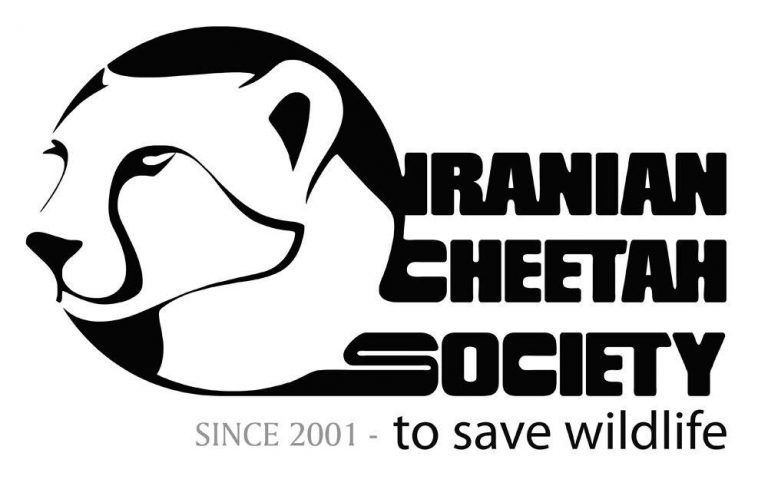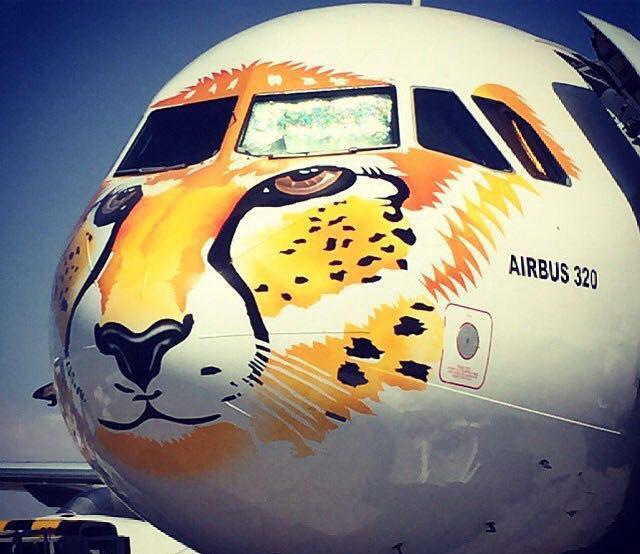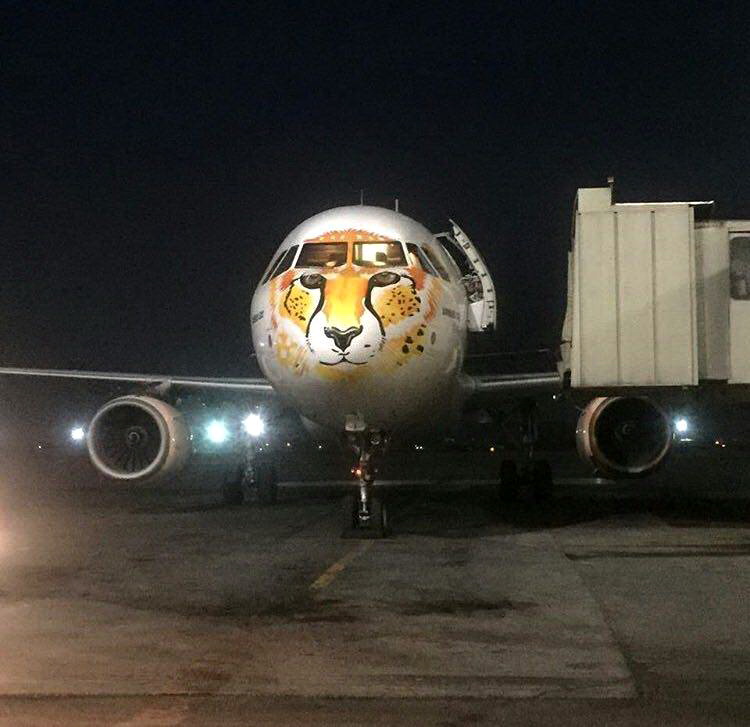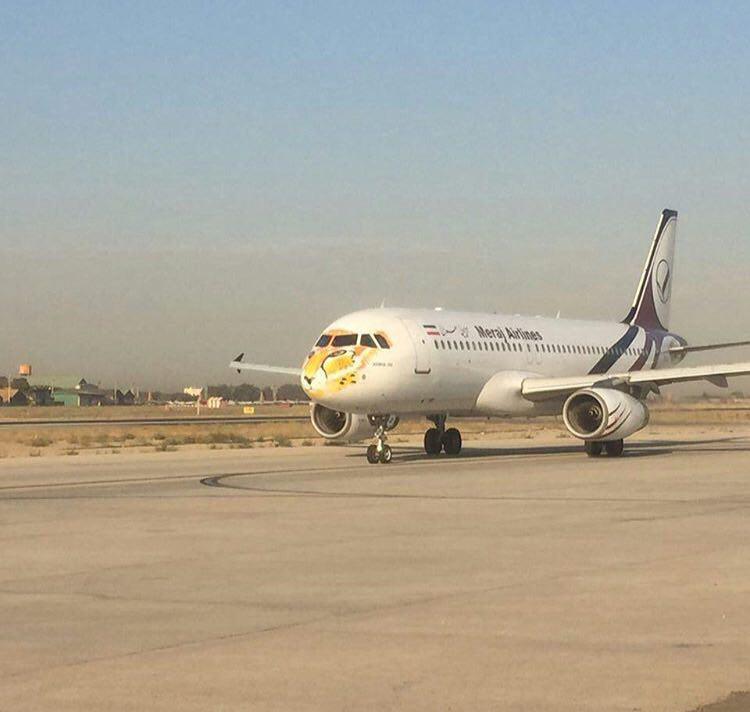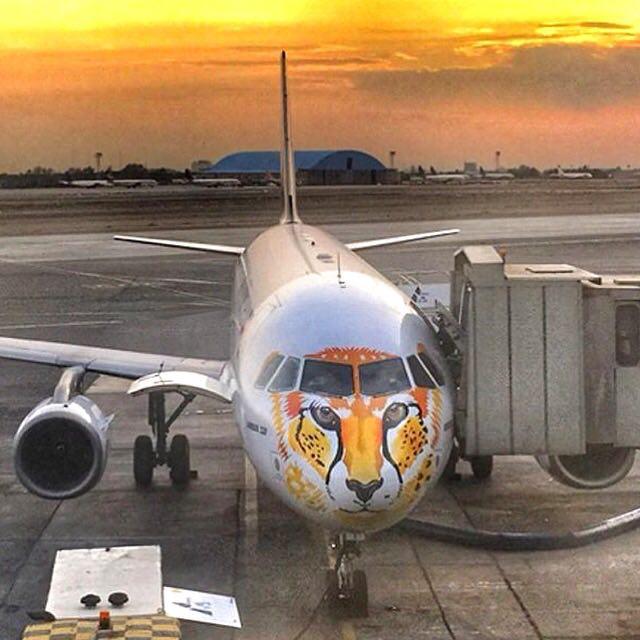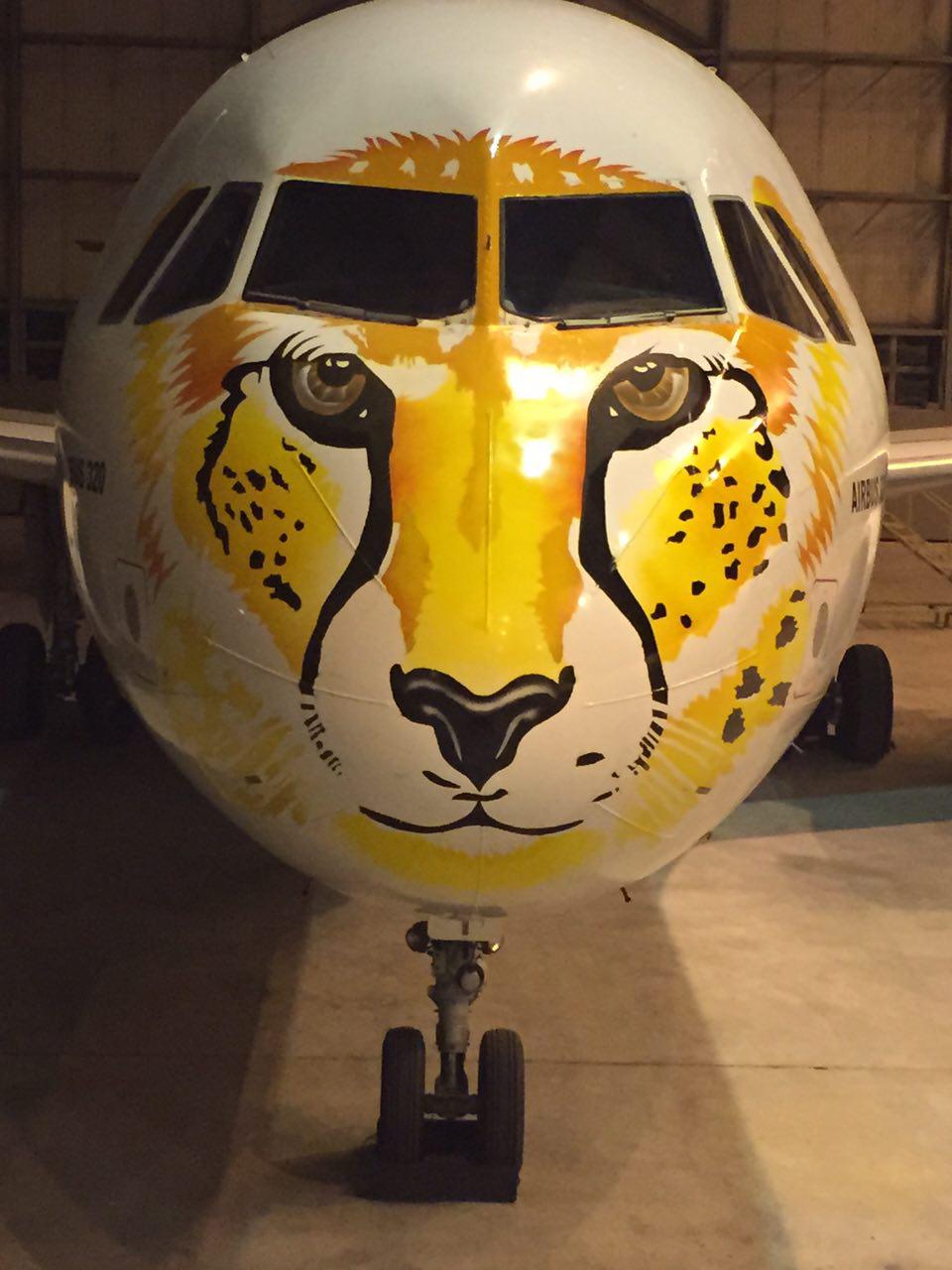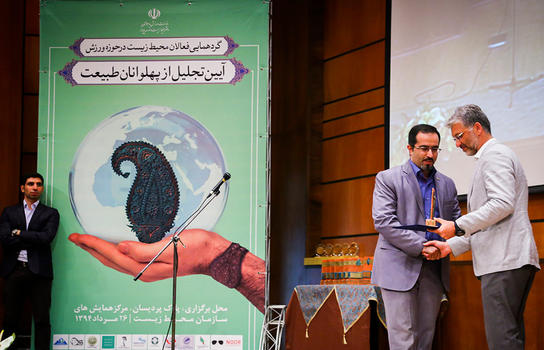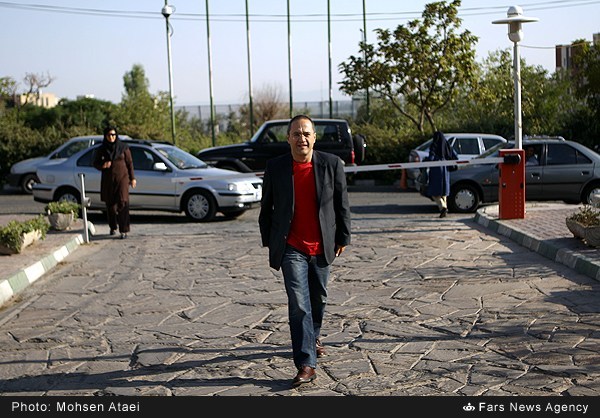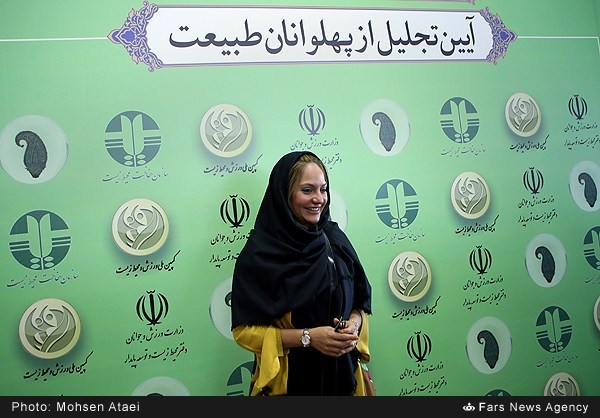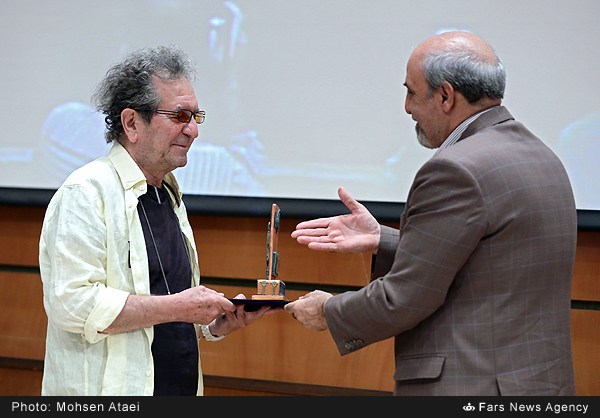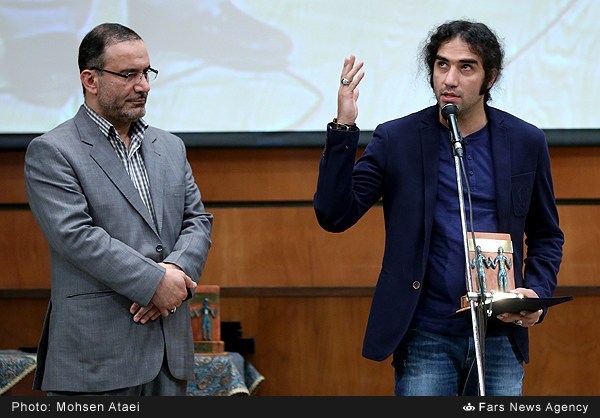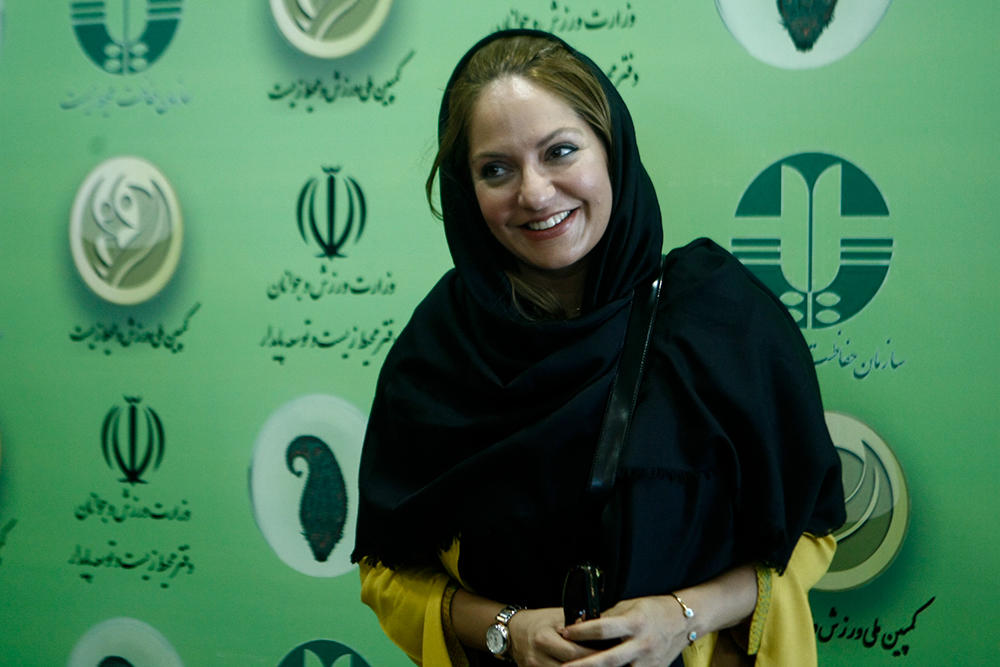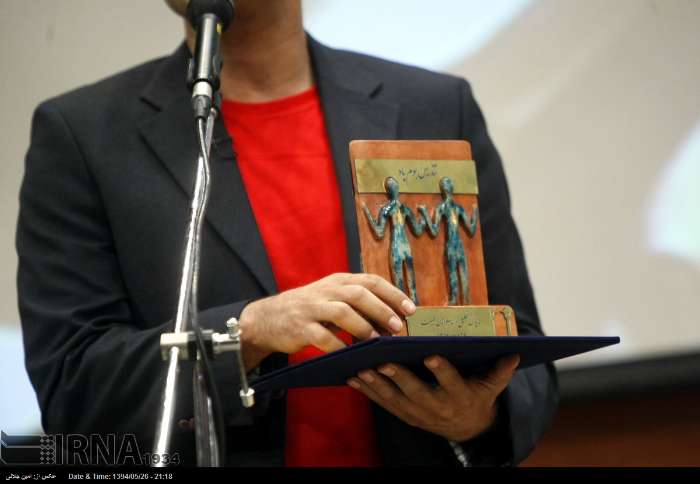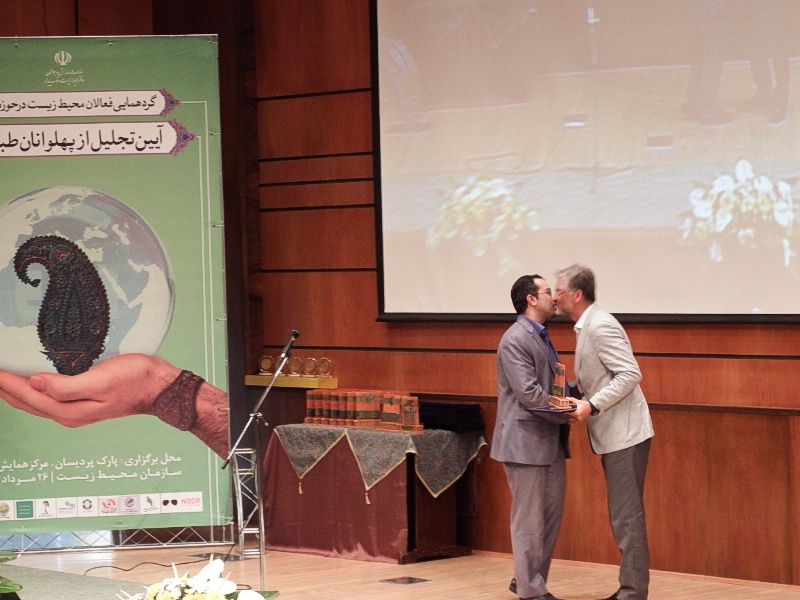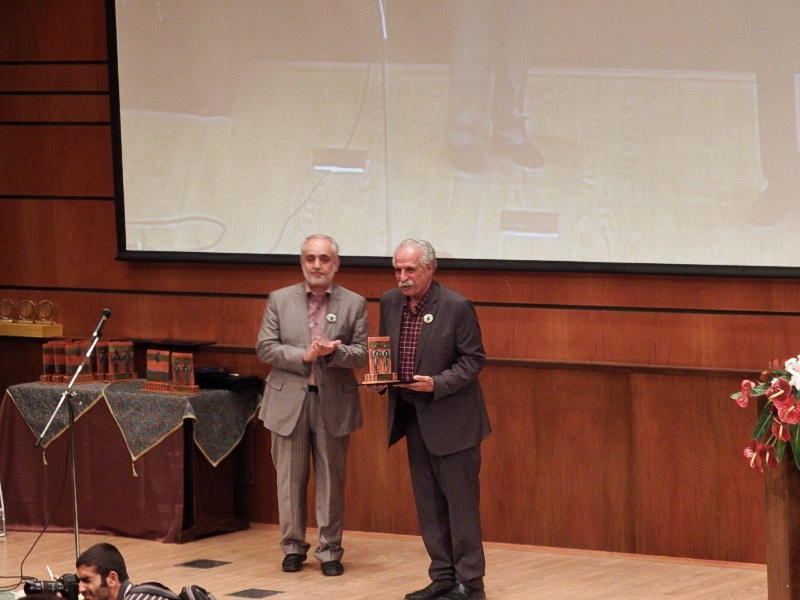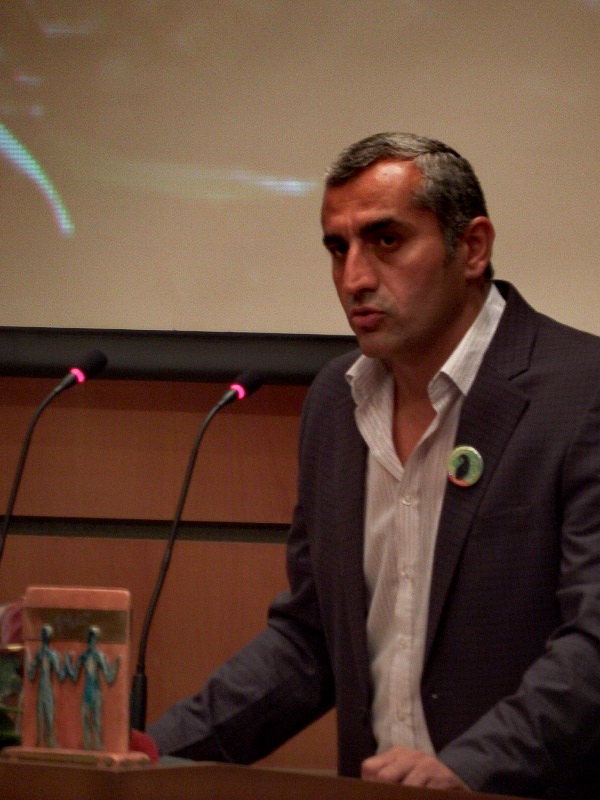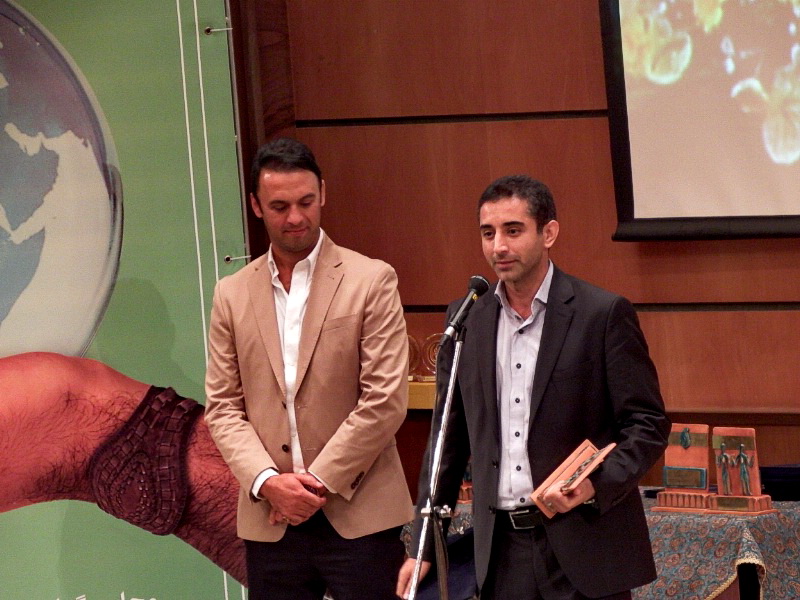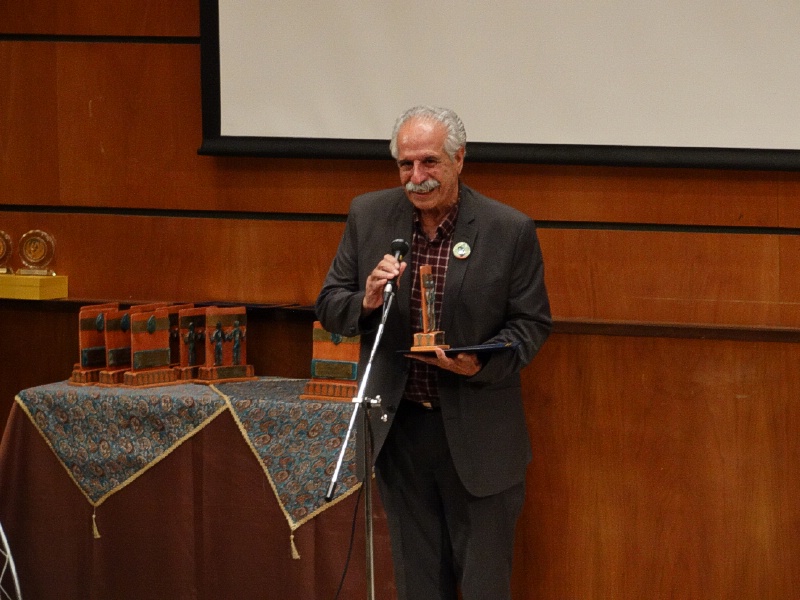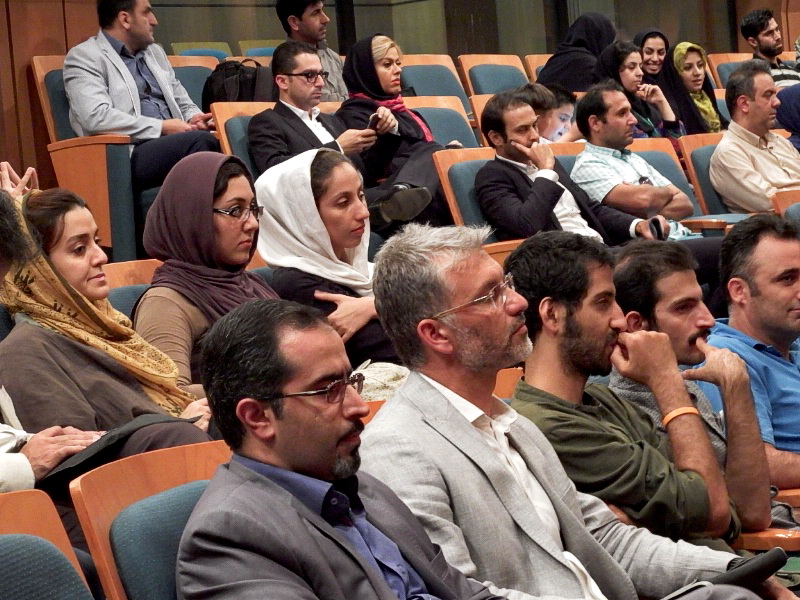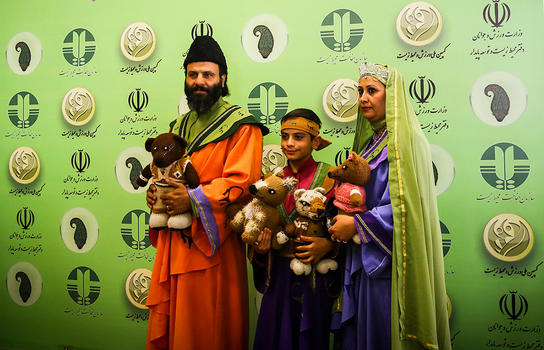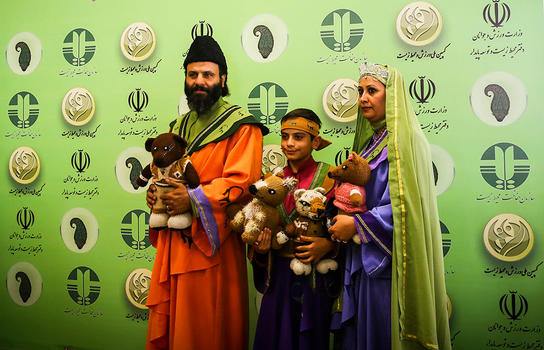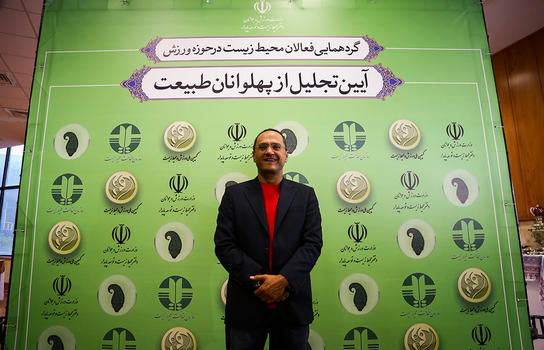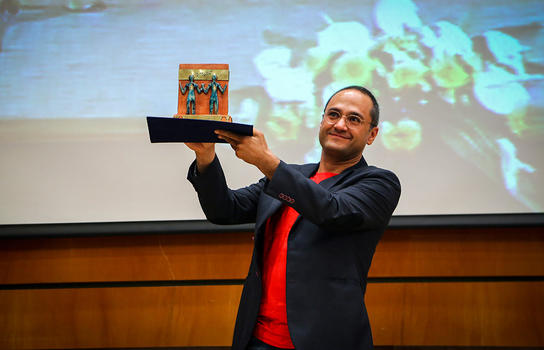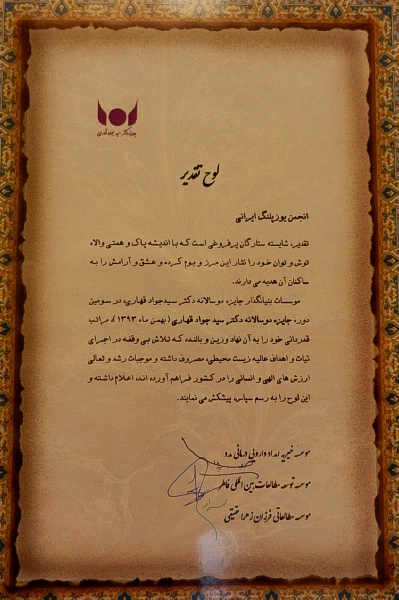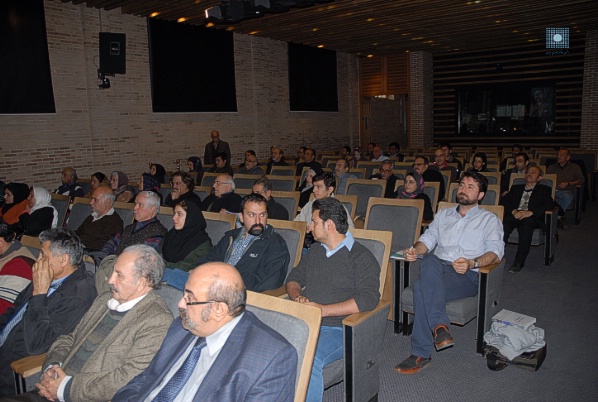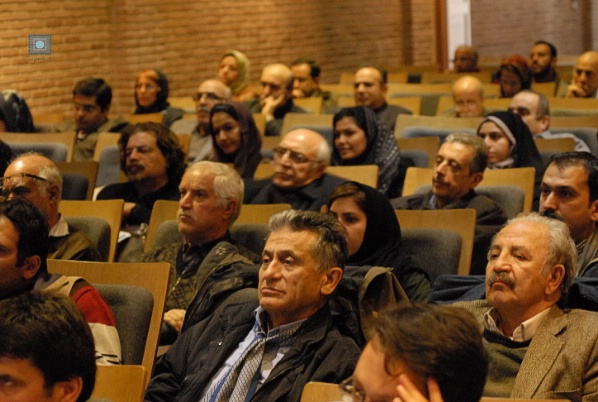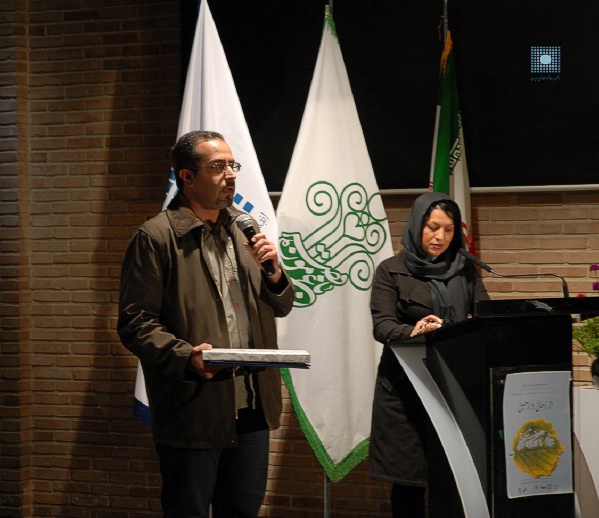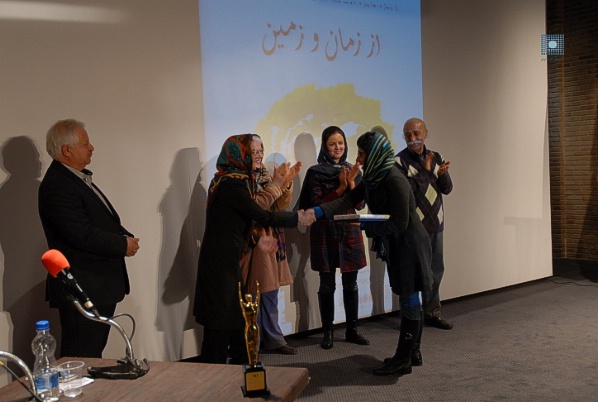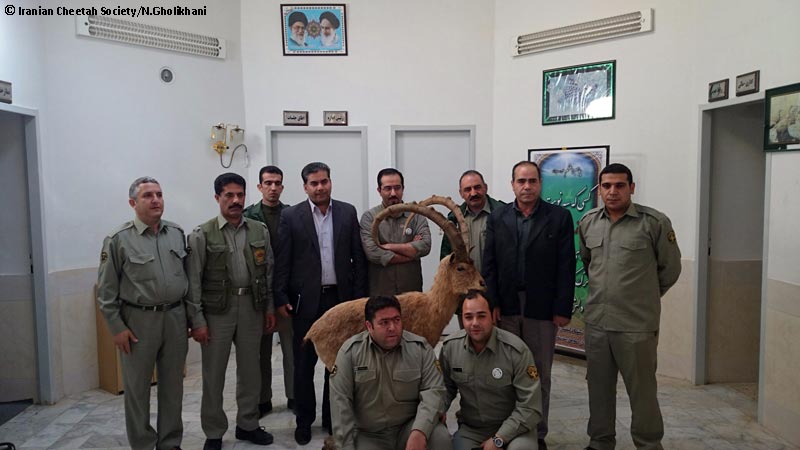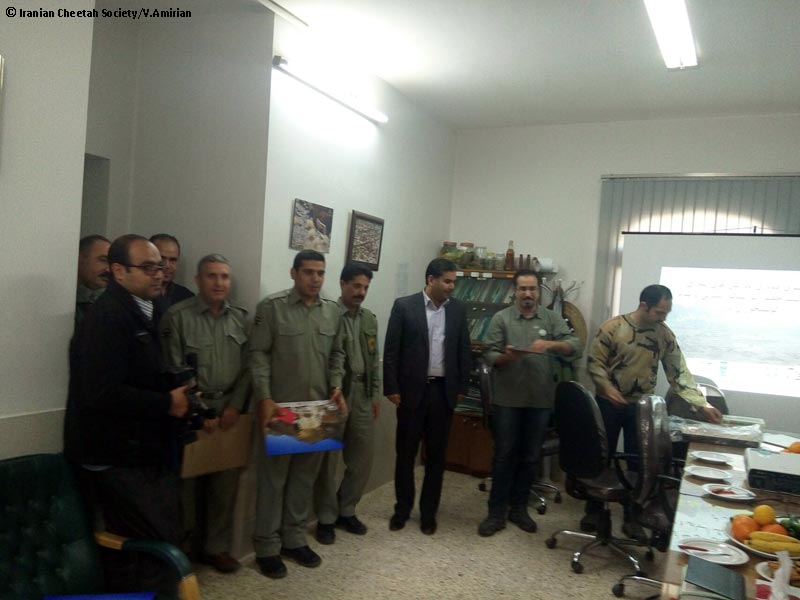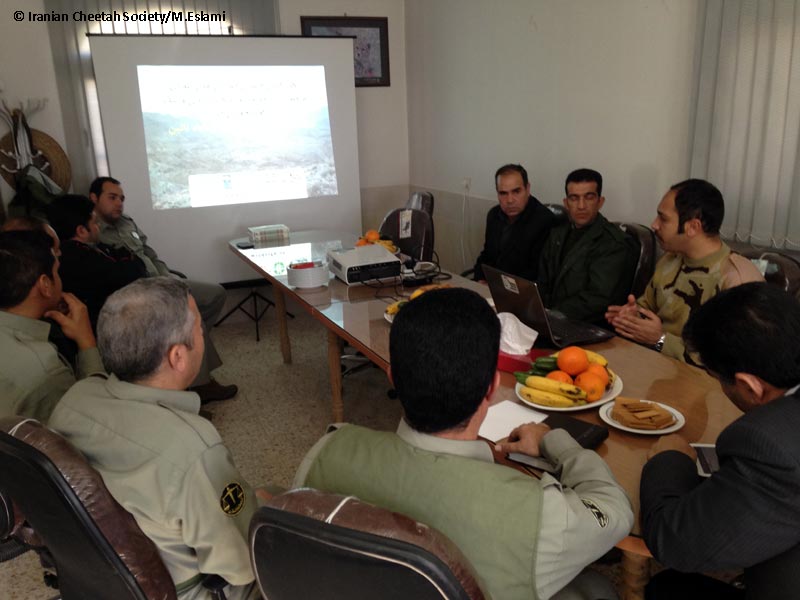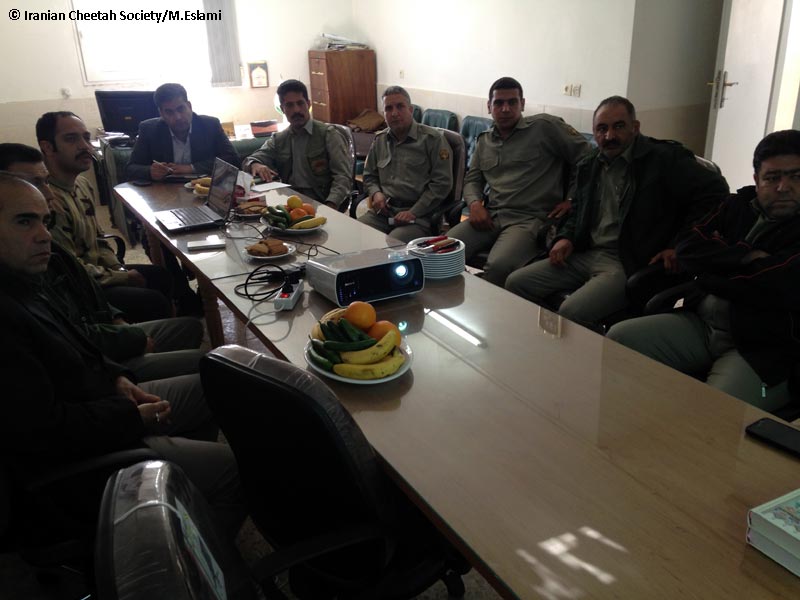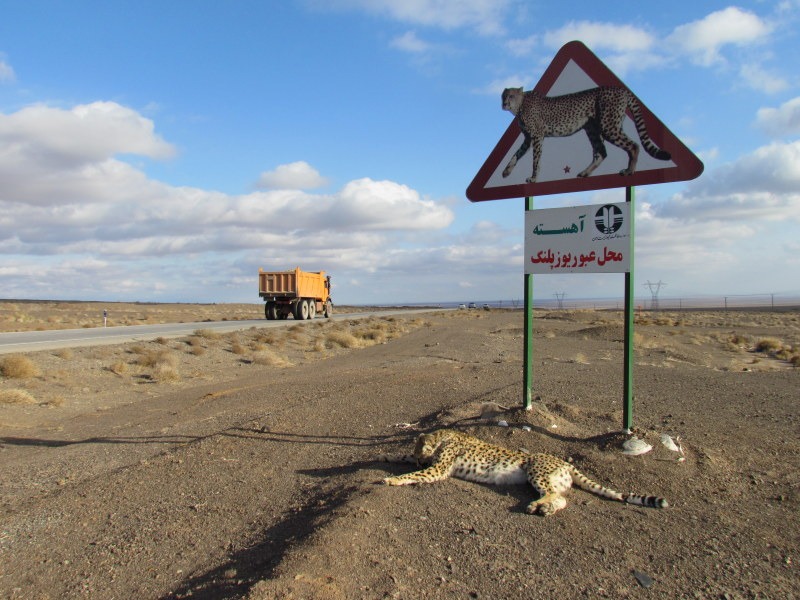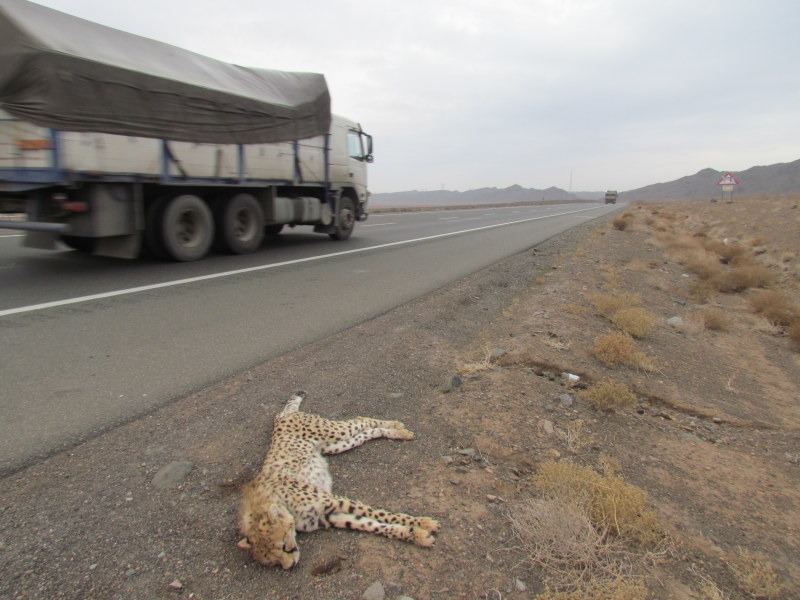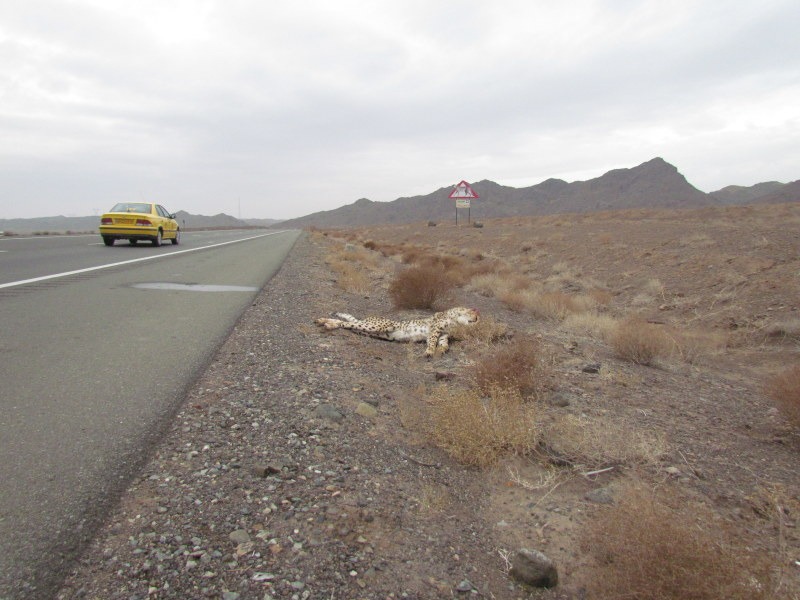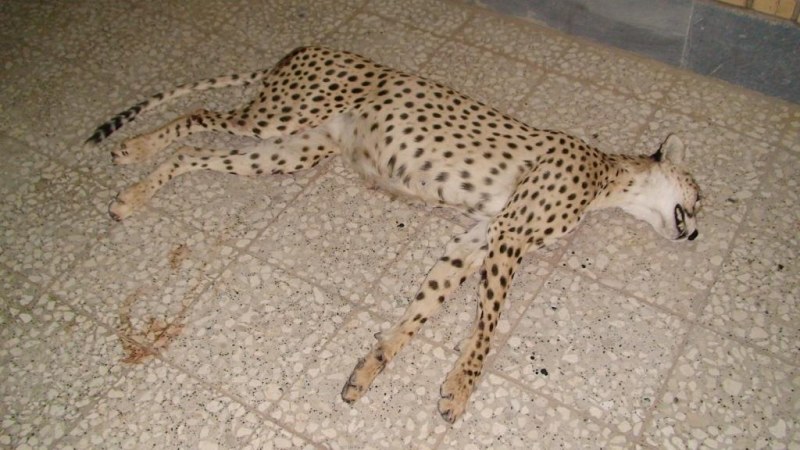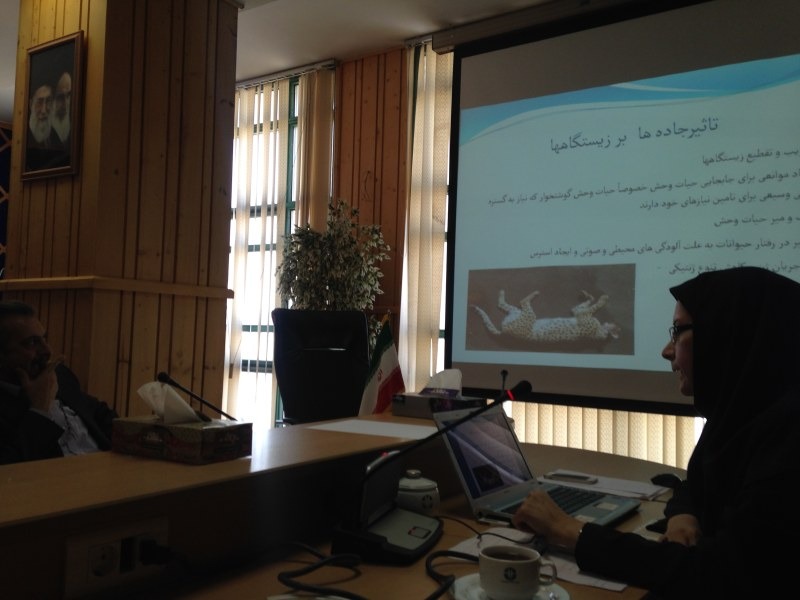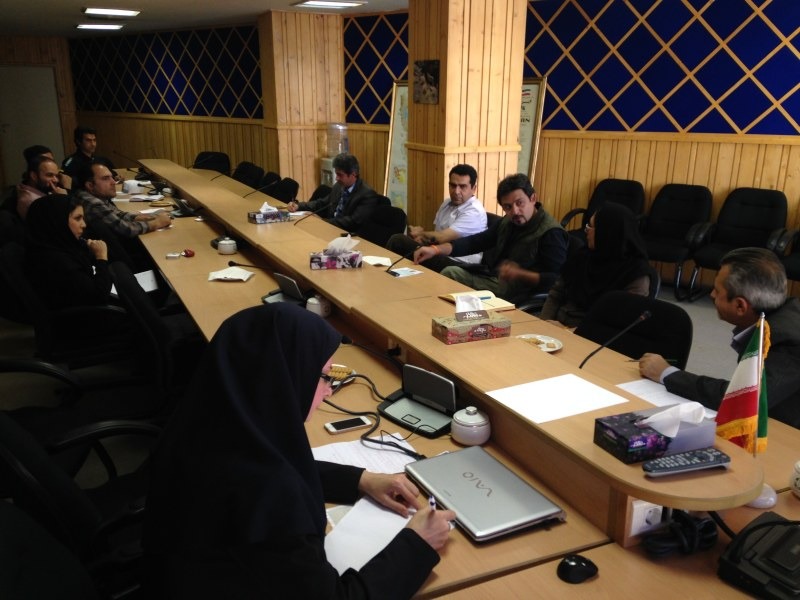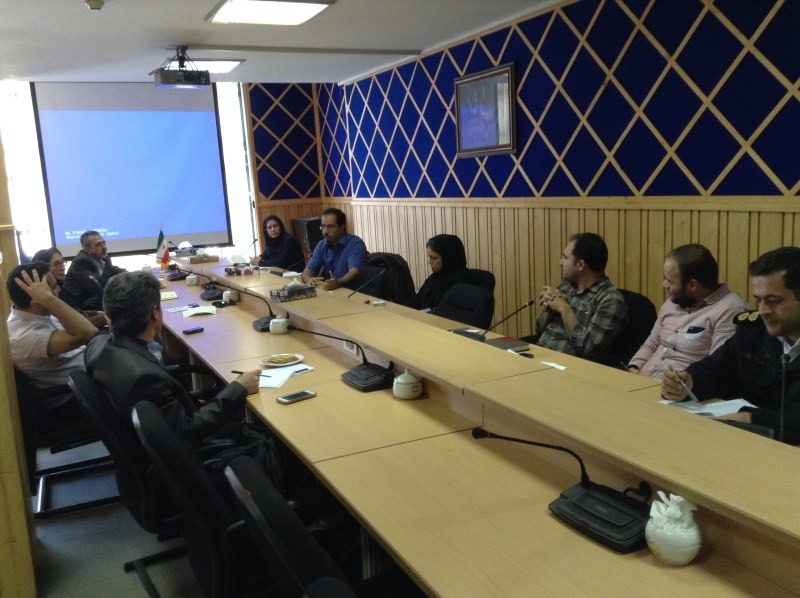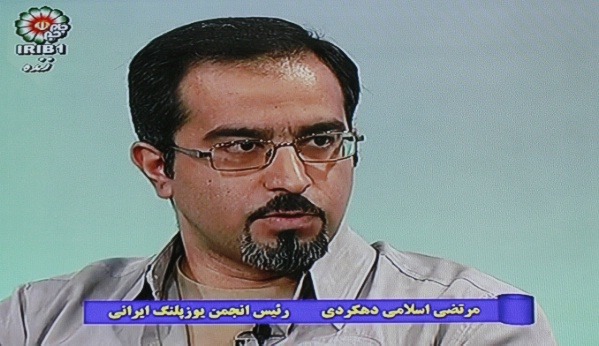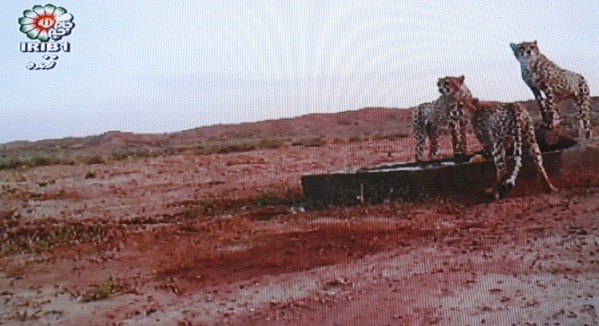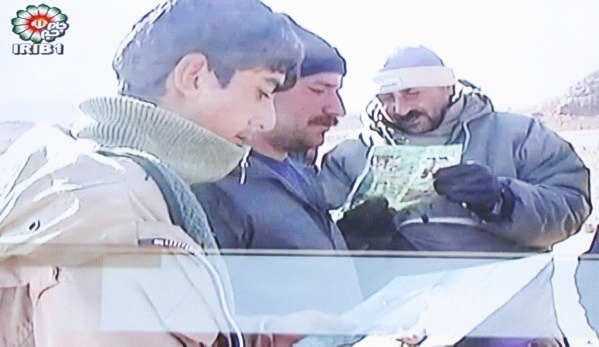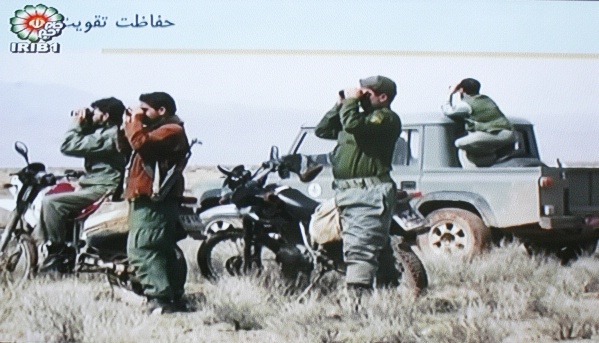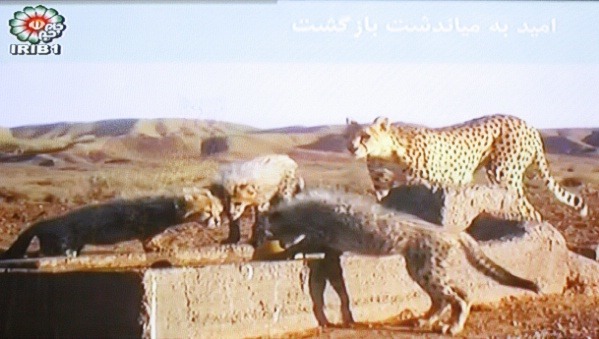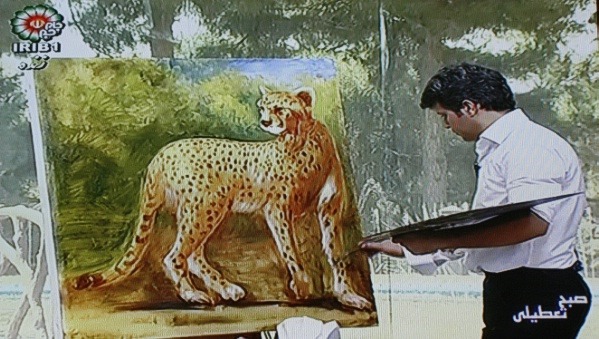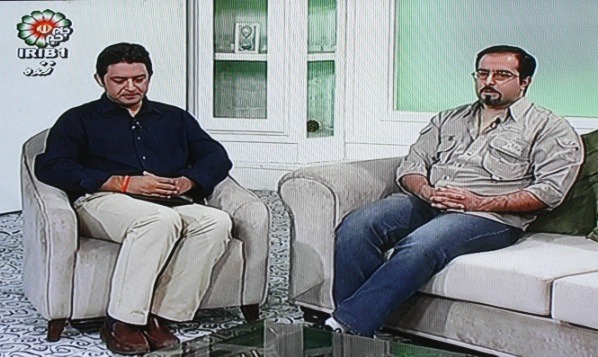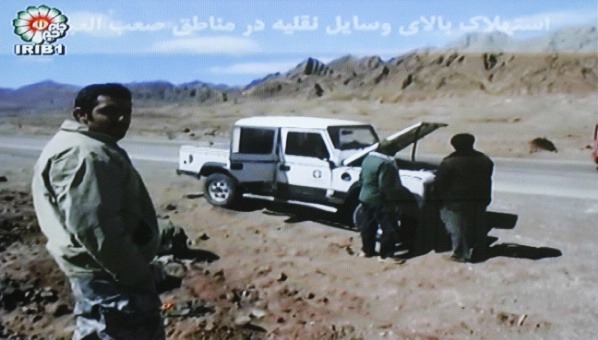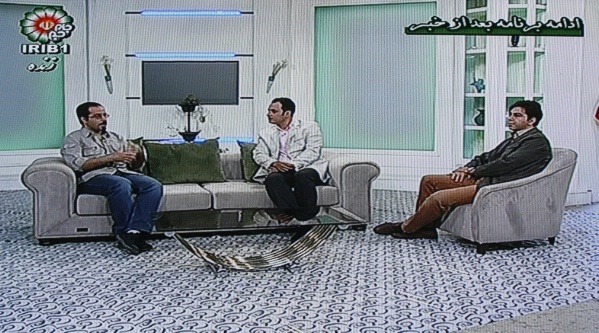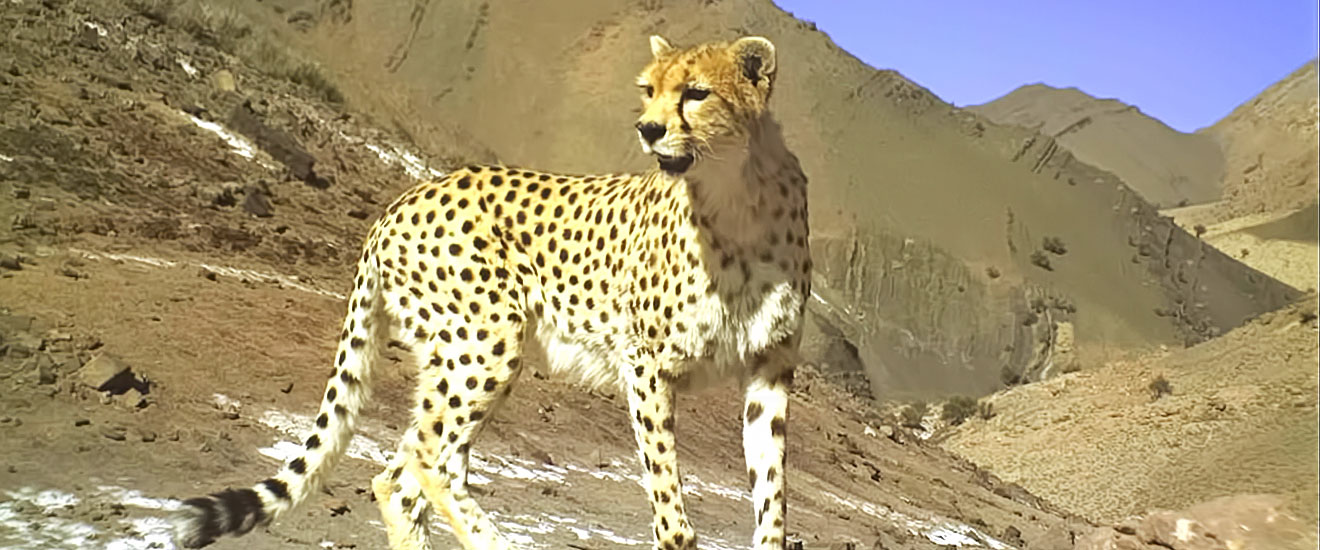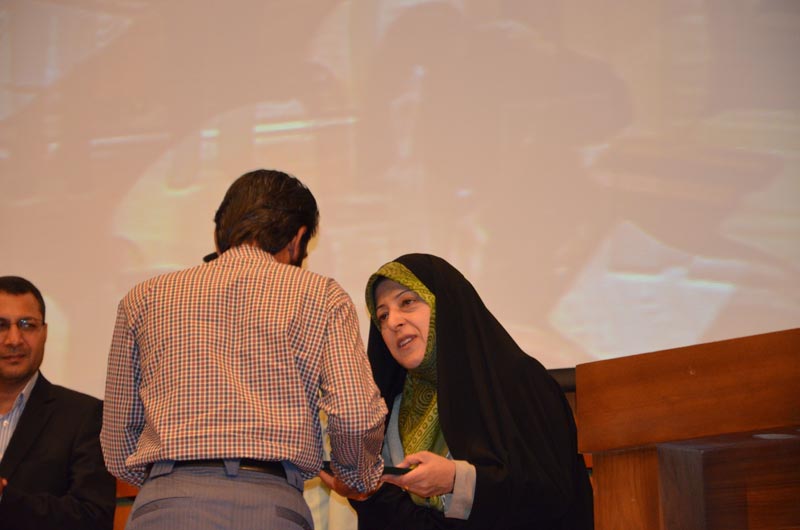The first cheetah airplane in the world, an Airbus A320 belonging to Meraj Airlines, made its first flight on 13 September 2015 at 08:00 from Tehran to Mashhad. Meraj Airlines started its collaborations in educational awareness activities with the Iranian Cheetah Society in winter 2015.
ICS News
Iranian Cheetah Society awarded for its education and environment awareness campaigns
The event, jointly held by Ministry of Youth Affairs and Sports and Iran Department of the Environment, celebrated collaboration of Iranian conservationists and athletes aiming for education and environmental awareness purposes. Iranian Cheetah Society’s CEO, Morteza Eslami, received the prize in the final ceremony from the national managers of the Conservation of the Asiatic Cheetah Project. Additionally, the head of the Society’s documentary production unit, Fathollah Amiri, awarded as the best environmental documentary maker.
The Minister of Youth Affairs and Sports of Iran, deputies of Iran Department of the Environment, environmental NGOs and activists, and a number of Iranian top athletes attended the final ceremony.
Iranian Cheetah Society’s CEO at Hamshahri Magazine
“Cheetahs in Iran?! How it might be possible?” The most common question almost everyone asked us when we started our efforts for conservation of the Asiatic cheetahs in Iran. Said Morteza Eslami, CEO of ICS, in an interview with “Hamshahri- My Neighborhood Magazine”.
Hamshahri is one of the largest circulation publishers in Iran and its My Neighborhood Magazine is widely circulated in Iran’s Capital Tehran. The Interview with ICS’ CEO which released in February 2015, focuses on history of the Iranian Cheetah Society, its progress as a leading conservation unit in the country, and ICS’ efforts for conservation of cheetahs and other endangered wildlife of Iran.
The Iranian Cheetah Society Awarded for Wildlife Conservation
On January 28, the Iranian Cheetah Society (ICS) awarded the Dr. Ghahari Award for its commitment to conservation of the Iranian wildlife. Held in Farrokhi Yazdi Hall of Iranian Art Garden Museum, the ICS’ CEO, Morteza Eslami, received the prize in a ceremony which gathered members from several Iranian environmental NGO’s and organizations.
Dr. Javard Ghahari Award bestowed in a number of categories by Madad Charity Foundation in recognition of spectacular humanitarian and environmental achievements by Iranian NGOs or individuals.
In a ceremony held by Esfahan Office of Iran Department of the Environment (DoE), wardens of Abbas Abad Wildlife Refuge were awarded. Participated by the Iranian Cheetah Society (ICS)’s CEO Morteza Eslami and local wildlife authorities, the awards were given to the reserve wardens because of their efforts to save the area’s wildlife and critical habitats as the last known cheetah reserve in the Esfahan Province, central Iran.
Esfahan DoE’s manager expressed his willingness that NGOs like ICS more actively collaborate with the Provincial DoE in conservation of cheetahs and other endangered wildlife species. Additionally, ICS’ CEO presented their national plan for monitoring and conservation of cheetahs and acknowledged the valuable contribution of local wildlife authorities and wardens in such nation-wide effort.
Abbas Abad Wildlife Refuge is a 400,000-ha reserve located in Naein County of Esfahan Province. Recent camera-trapping efforts in the reserve have results in photo-capturing of various wildlife species in this arid land including cheetahs, Persian leopard, sand cat, caracal, wild cat, grey wolves, and more interestingly, three species of fox living in sympatry (i.e. red fox, Sand or Ruppell’s fox, and Blanford’s fox).
Urgent Actions Required to Mitigate Wildlife-Vehicle Collisions in Iran
Data from Iran Department of the Environment shows that road accidents are the top cause of human-induced mortality in the Iranian network of protected areas. Iranian Cheetah Society supports a specialist group consisting of conservationists, decision makers and stake holders to mitigate the impact of roads on the Iranian wildlife.
Roads have been the major cause of mortality for the Critically Endangered Asiatic cheetahs, forming 40% of the revealed mortalities during the past decade. Just very recently, a female cheetah and its cub have been killed in vehicle collision in Semnan province, vicinity of Touran Protected Area.
Globally, impact of road on wildlife has been a major source of concern. Different solutions to reduce the negative influence of road infrastructures have been so far suggestion. The specialist group in Iran is going to review these suggestions, and formulate an action plan for Iran.
During the first meeting at Iran Department of the Environment, the group has agreed on the following decisions as the first step:
• Iran Department of the Environment will work closely with the Iranian Traffic Police to identify hotspots of wildlife mortality in main roads across the country
• A new protocol to reduce wildlife mortalities on these hotspots will be formulated and will be sent to the departments in charge of road infrastructure in Iran to be implemented
So far, five hotspots of wildlife mortality, particularly for the cheetahs, have been recognized in Kalmand-Bahadoran Protected Area, Yazd province, and Touran National Park, Semnan province. New measures will be implemented for these hotspots in order to reduce vulnerability of cheetahs and other wildlife.
WITH A WORLD CUP DEBUT LOOMING, A RARE CHEETAH’S PLIGHT IS IN FOR SOME GLOBAL ATTENTION
When Iran’s football team takes to the field at this year’s World Cup competition in Brazil, it will sport on its jerseys not only its country’s insignia like all other teams, but also an image of the Asiatic cheetah emblazoned across the front. Allowing such an image is a radical departure for FIFA: its rules clearly stipulate that only country insignias and manufacturers’ logos can appear on jerseys. But it’s an even greater departure for Iran, whose top environment official requested this rare exception in a face-to-face meeting with FIFA’s head last year. Little more than a decade ago, few Iranians knew they were stewards of the last remaining Asiatic cheetahs on earth. Now, many hope the cheetahs’ international debut at the World Cup will raise global awareness and help them save their remnant population.
Centuries ago, Asiatic cheetahs roamed across much of the Middle East and into eastern India. Medieval royalty throughout the region often captured and trained cheetahs as hunting partners, even carrying them on horseback to hunting grounds. But somewhere along the way the hunters became the hunted. The last three cheetahs in India were shot by a Maharajah in 1947 when he spotted them in the beams of his car headlights. A growing human population and its livestock have crowded out Asiatic cheetahs in most countries, overgrazed the landscape, depleted their prey and often killed them on sight. By the 1990s, scientists estimated that Asiatic cheetahs were extinct in most of their former range and that fewer than 50 remained in Iran, holding out in the arid deserts in the eastern half of the country.
As you may remember, just a few weeks, a national conference was held in Iran by the Iranian Cheetah Society (ICS) in order to acknowledge tremendous efforts of 18 Cheetah Guardian working hardly to secure the cheetah ranges across Iran. While the event was quite successful to raise public attention through vast media coverage; however, another two persons were also highlighted in the ceremony which were actually lost in media. They were two herders, who lost their livestock to the cheetahs and the leopards in two different locations in the country. Mojtaba Ilkhani and Pourdel Nezhadravari, both witnessed the predators on their killed animals, but rather than trying to kill them using a shotgun or existing pesticide poisons, they immediately reported the case to Department of Environment game guard to inspect the situation. There is an established compensation program in Iran managed by the DoE; however, long bureaucratical process and financial constraints both have challenged its success.
Therefore, they were invited to the cheetah conference by the ICS to receive a remarkable financial incentive besides being acknowledged by the DoE’s head due to considering law. Furthermore, they are also invited to the ICS projects to share their expertise and to collaborate in field works aiming to protect the cheetahs in the country.
However, nobody can expect all local people to report their loss which sometimes can be substantial to their ivelihood whenever they encounter big cats. In recent years, a few cheetahs have been killed due to conflict cases. Therefore, while protecting of the reserves to sustain natural prey population can be essential to prevent conflict cases, but compensation programs need a crucial revision in Iran, if any conservation outcome is expected from allocating the money to losers. In the meantime, herders have high level of experience within the habitats, so their knowledge can be shared through involving them in conservation and monitoring efforts.
Celebrating 12 Years of Wildlife Conservation in Iran
In August 2013, the Iranian Cheetah Society (ICS) celebrates its 12th birthday. Established in 2001, the ICS was launched by three enthusiastic students all committed to do something for the vanishing Asiatic cheetahs in Iran. The animal had a gloomy status at those years and the least hope exists among the most optimistic experts for its survival. Beside the Iranian Department of Environment (DoE), the ICS devoted itself to safeguard the cheetahs in Iran through two practical objectives, namely as research and public awareness.
As working hard through the time, the ICS captured new expertise and equipment and broadened its activities to cover Iranian carnivores, particularly Persian leopard, striped hyena, brown bear, and grey wolf. Accordingly, it has been conducting the first on ground research programs on the species and supported university students to investigate on these creatures. Also, educational plans were implemented across most of vast habitats of the cheetahs in Iran as well as other species. In order to be more effective, the ICS established documentary film as the third section to produce high quality wildlife movies in Iran to illustrate our unique biodiversity for people.
Now, the Iranian Cheetah Society (ICS) has around 30 staffs and more than 300 volunteers in Iran. Also, there is well organized international network of the ICS representatives based in the Europe and North America supporting us in Iran. We have the highest level of scientific equipment in Iran which can guarantee our hard and continuous efforts in the field. Meanwhile, the ICS has been regularly recognized to receive high-level national and international awards, thanks to severe attempts made by our staffs, volunteers and supporters.
However, the ICS is not happy when sees that almost no coherent is still exist from its generation, nearly all several dozen hundreds
of Iranian environmental NGOs started at those years have been faded. We are hopeful to see our second decade of life with more NGOs working in Iran hands in hands to secure future of our biodiversity.
As the most internationally-known Iranian NGO, the Iranian Cheetah Society (ICS) is grateful to all colleagues, partners, donors and
sponsors who recognized our passion to the Iranian wildlife and knew us as eligible to be supported. Despite of surviving in harsh and difficult environment, like where the cheetahs live, we are aware that we are now at start point, of course not fragile but robust. Ahead, we see a long way that we can be effective and any possible advice or contribution is highly appreciated.
We’ll remain.
